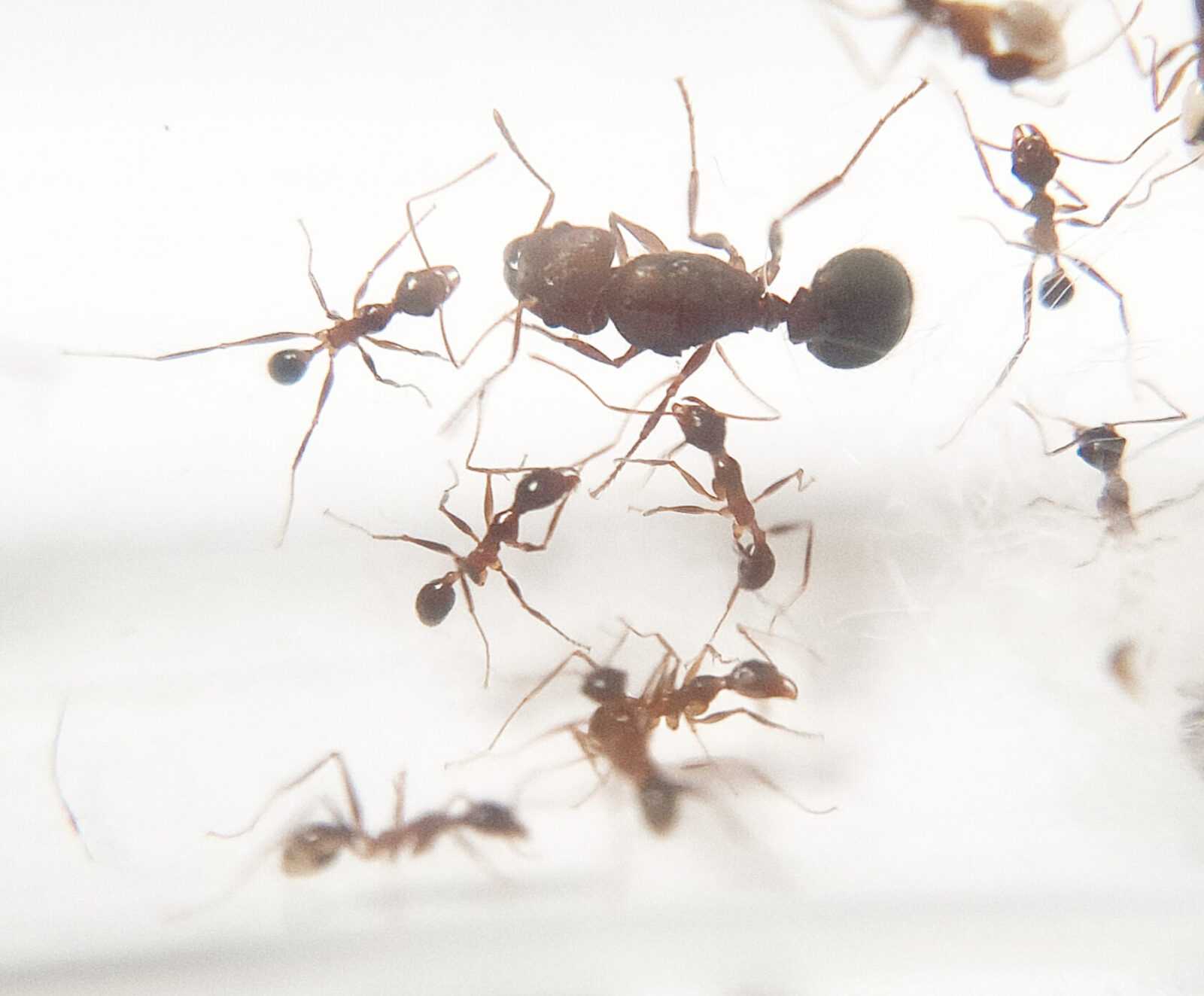Pheidole singaporensis
Welcome to our product page for Pheidole singaporensis, a fascinating species of ants! If you are interested in keeping ants as pets or for observation, the Pheidole singaporensis colony is a great choice. In this product description, we will provide you with detailed information about the colony type, size, development speed, nutrition, humidity, temperature, and recommended nests for breeding. Let’s dive in!
Colony Type: Monogyny
The Pheidole singaporensis colony is characterized by its monogyny, which means that it consists of a single queen ant. This type of colony structure is known for its stability and efficient cooperation among workers.
Colony Size: Up to 50,000 workers
One of the remarkable aspects of Pheidole singaporensis colonies is their potential to grow in size. These colonies can reach up to an impressive population of 50,000 workers, showcasing their ability to thrive and expand rapidly.
Development Speed: Fast
If you are looking for an ant species that develops quickly, Pheidole singaporensis fits the bill. Their development speed is known to be fast, allowing you to witness the growth and progress of the colony in a relatively short period of time.
Size
The size of Pheidole singaporensis ants varies within the colony hierarchy:
- Queen: The queen ant measures approximately 8-9mm in size. She is the largest member of the colony and is easily distinguishable.
- Workers: The worker ants range in size from 3-5mm. These ants carry out various tasks within the colony, such as foraging for food and caring for the brood.
- Majors: There are also major ants in the colony, which can grow up to 5-7mm in size. These ants have larger heads and mandibles, which they use for defense and other specialized tasks.
In terms of color, Pheidole singaporensis ants have a reddish-brown hue with a darker back. The queen ant, in particular, has a darker coloration compared to the other members of the colony. Their unique coloration adds to the visual appeal of these ants as pets or for observation purposes.
Nutrition
Providing a balanced and varied diet is essential for the health and well-being of Pheidole singaporensis ants. Here are some recommended food sources:
- Food Insects: Pheidole singaporensis ants are avid insect hunters and appreciate a diet that includes insects such as cockroaches and crickets. These can be offered live or pre-killed to ensure the safety of the ants.
- Syrup: A syrup mixture of water and honey with a ratio of 4:1 or 3:1 can be offered as a liquid food source. This provides the ants with carbohydrates for energy.
- Fruits and Vegetables: Fresh fruits and vegetables can be added to the diet to provide essential vitamins and minerals. Offer a variety of options like apples, strawberries, lettuce, and carrots.
- Jelly: Some ants enjoy jelly as a treat. You can provide small amounts of jelly products as an occasional food source for your Pheidole singaporensis ants.
- Cooked Chicken: Provide small pieces of cooked chicken without salt as a source of protein.
Remember to observe the feeding habits of your ants and adjust the diet accordingly to ensure they receive the necessary nutrients for their well-being.
Humidity and Temperature
Creating a suitable microclimate is crucial for the thriving of Pheidole singaporensis colonies. Here are the recommended humidity and temperature ranges:
- Arena Humidity: Maintain the humidity level in the arena between 50% and 70%. This can be achieved by misting the area or using a humidifier, depending on the setup.
- Nest Humidity: The humidity level within the nest should be slightly higher than the arena, ranging between 50% and 80%. This can be achieved by using hygroscopic materials or providing a water source within the nest.
- Arena Temperature: The temperature in the arena should be maintained between 21°C and 30°C. This temperature range mimics the natural habitat of Pheidole singaporensis ants.
- Nest Temperature: The temperature within the nest should be slightly higher, ranging between 24°C and 30°C. This can be achieved through the use of heating cables or mats.
Monitoring and maintaining appropriate humidity and temperature levels will ensure the optimal conditions for the health and productivity of your Pheidole singaporensis colony.
A Feature of the Species: Aggressive Army and Beautiful Polymorphism
Pheidole singaporensis ants are widely known for their aggressive nature, which is reflected in their behavior as a united army. This species exhibits a remarkable polymorphism, meaning that there is a significant variation in the physical appearance among individuals within the colony. The presence of minor workers, major workers, and the queen highlight the beautiful diversity found within Pheidole singaporensis.
Recommended Nests for Breeding
The choice of a suitable nest is crucial for the well-being and development of your Pheidole singaporensis colony. Here are some recommended nest materials:
- Acrylic: Acrylic nests provide a clear and easily observable environment for your ants. They are easy to clean and maintain, making them a popular choice among ant keepers.
- Gypsum: Gypsum nests offer a natural-looking habitat for your Pheidole singaporensis ants. They provide good moisture retention and can be aesthetically pleasing.
- Aerated Concrete: Nest setups made from aerated concrete provide excellent insulation and moisture control. They are also known for their durability and longevity.
When choosing a nest, consider the size and needs of your growing colony, as well as your personal preferences.
Thank you for taking the time to learn about Pheidole singaporensis and their care requirements. We hope this product description has provided you with valuable insights. Feel free to contact us if you have any further questions or require assistance in selecting the perfect Pheidole singaporensis colony for your ant-keeping journey. Happy ant-keeping!
















Reviews
There are no reviews yet.